Acer Predator Z301CT Monitor Review
Why you can trust Tom's Hardware
Grayscale, Gamma & Color
Grayscale Tracking
Making any change to the Z301CT’s image controls will put you in the User picture mode. You can save your settings to a memory slot when you’re done, but the other presets, like sRGB, are all fixed. The monitor doesn’t offer great out-of-box performance, so you’ll want to try our recommended values at minimum.
Our grayscale and gamma tests are described in detail here.
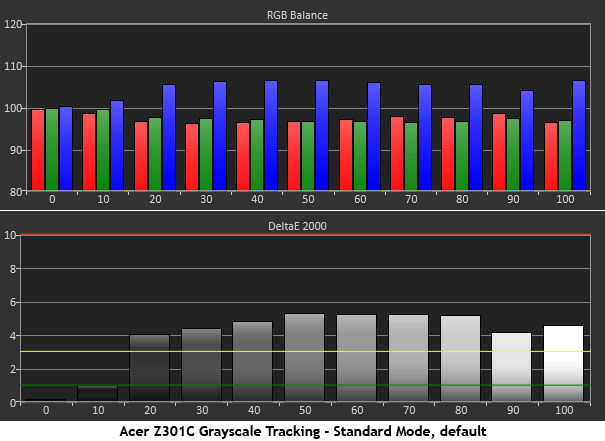

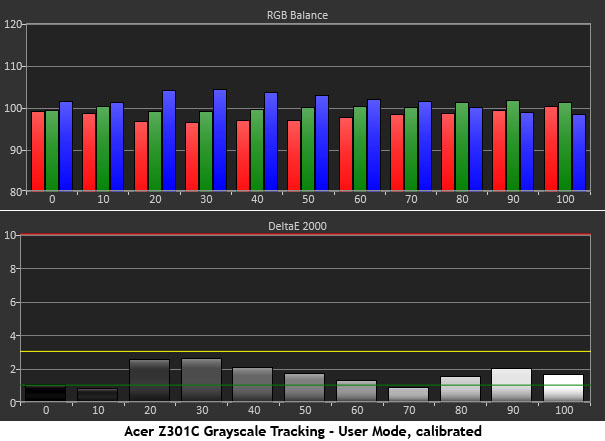
As delivered, the Z301CT has an average grayscale error of 4.41dE. That’s enough to be visible and our charts support that. You’ll see a slight blue tint from 20% onward, although the error isn’t huge. sRGB measures almost the same so you’ll want to engage the User color temp and make a few tweaks.
After a few back-and-forth tries, we arrived at a compromise with the RGB sliders. You only get a single-point adjustment which affects the brighter steps more than the darker ones. We usually adjust with an 80% pattern, but in this case we had to tweak other steps until all the errors were below 3dE. Our final average was 1.75dE, which isn’t bad, but not as good as some other displays. In the end, we were satisfied with the picture quality if not bowled over by its accuracy.
Comparisons


It wasn’t long ago that a 4.41dE default and 1.75dE calibrated measurement would have meant a mid-pack result. But the latest monitors are much better than their predecessors. While we don’t consider the Z301CT’s numbers to be a deal-breaker, there are more accurate screens available. But since most gamers are shopping for speed and features, this is unlikely to sway a purchase decision.
Gamma Response


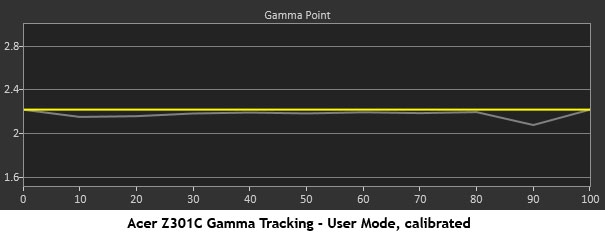
When you see gamma tracking that stays tight until it dips sharply at 90%, it is most likely due to an incorrectly set contrast control. And that is the case here. If you leave it unchanged, a lot of highlight detail will be clipped. In our tests, we could see it in both patterns and actual content. At minimum, we recommend dropping the slider to 42 to regain lost detail. Further changes to the RGB sliders will result in excellent tracking with no loss of information and color that tracks properly at all saturation and luminance levels.
Comparisons
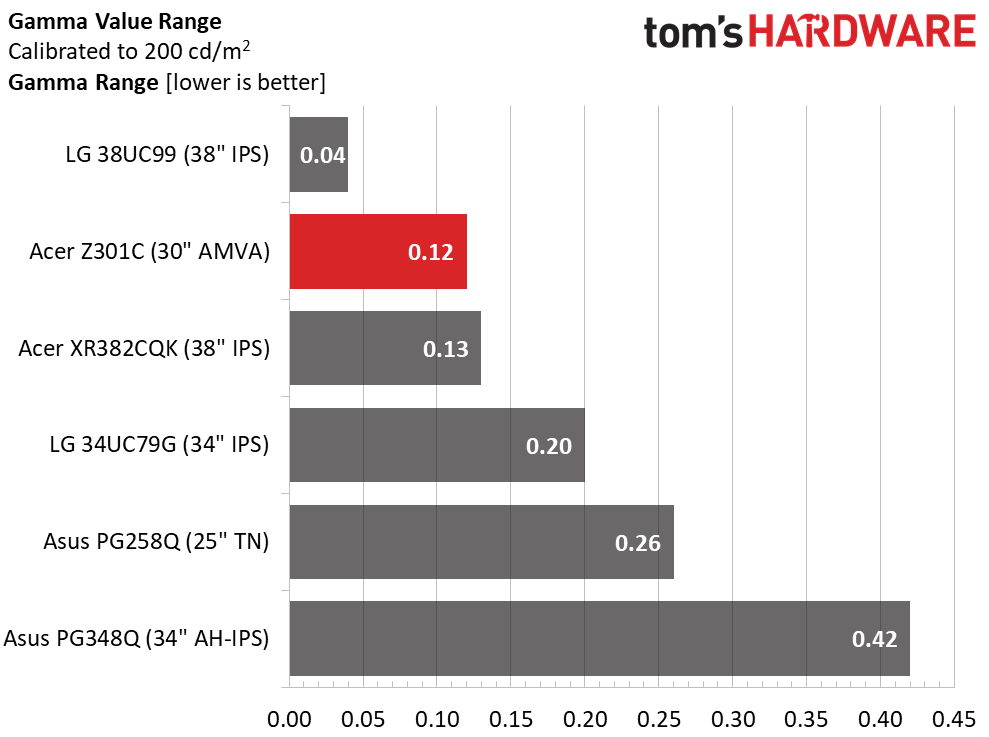

Our adjustments produce good gamma tracking with a small range of values and reasonably close adherence to the 2.2 power standard. It’s important to get this right not only for the effect it has on perceived contrast, but on color gamut accuracy at levels below the maximum. And since the Z301CT’s native gamut is slightly over-saturated, we want to get as many points on target as possible. You’ll see our color results below.
Get Tom's Hardware's best news and in-depth reviews, straight to your inbox.
Color Gamut & Luminance
For details on our color gamut testing and volume calculations, please click here.
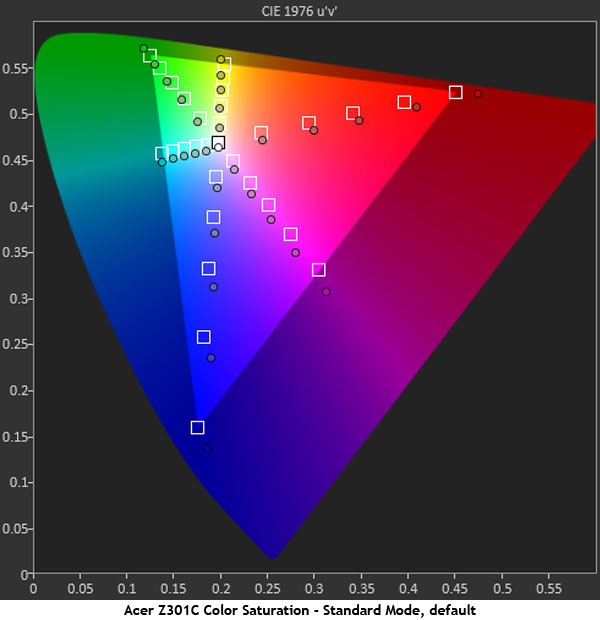
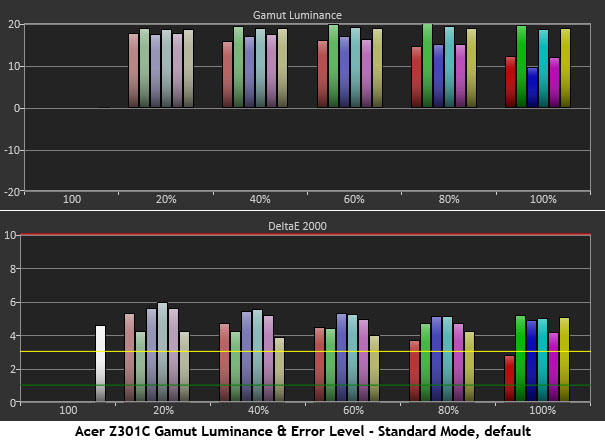
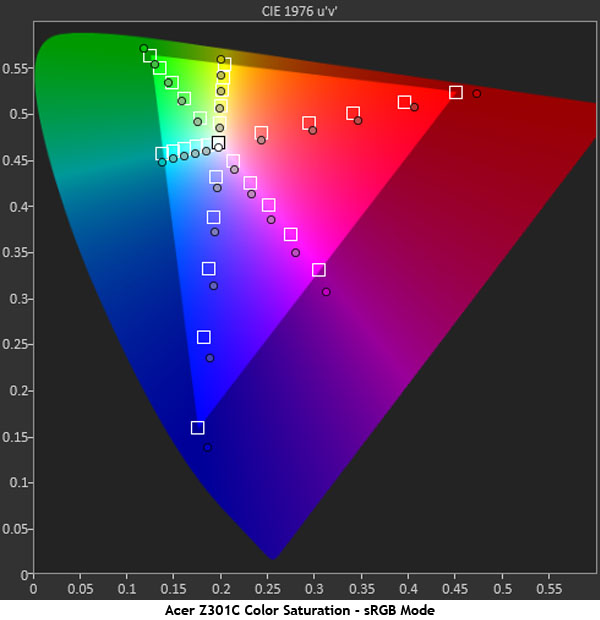



In its default state, the Z301CT shows over-saturated primaries with reasonably good tracking and luminance levels that are too high. Coupled with the default contrast setting, this results in un-natural color with missing detail. To get that information back, our adjustments detailed above bring gamma back in line. We attempted to tweak luminance further with the 6-axis sliders but didn’t see enough benefit to warrant the adjustments. It amounted to a small difference in the average error level, but it convinced us to leave the sliders at their defaults. The final two charts show the improvements possible with changes to just the contrast and RGB controls. We’ve gained quite a bit of accuracy with very little adjustment.
Comparisons
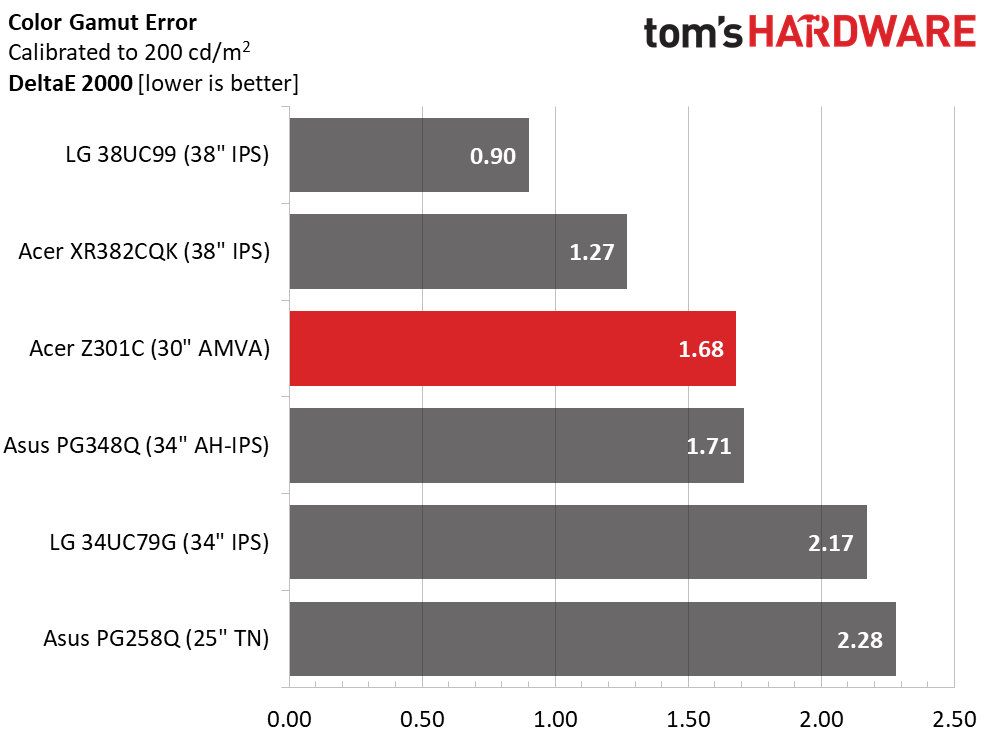
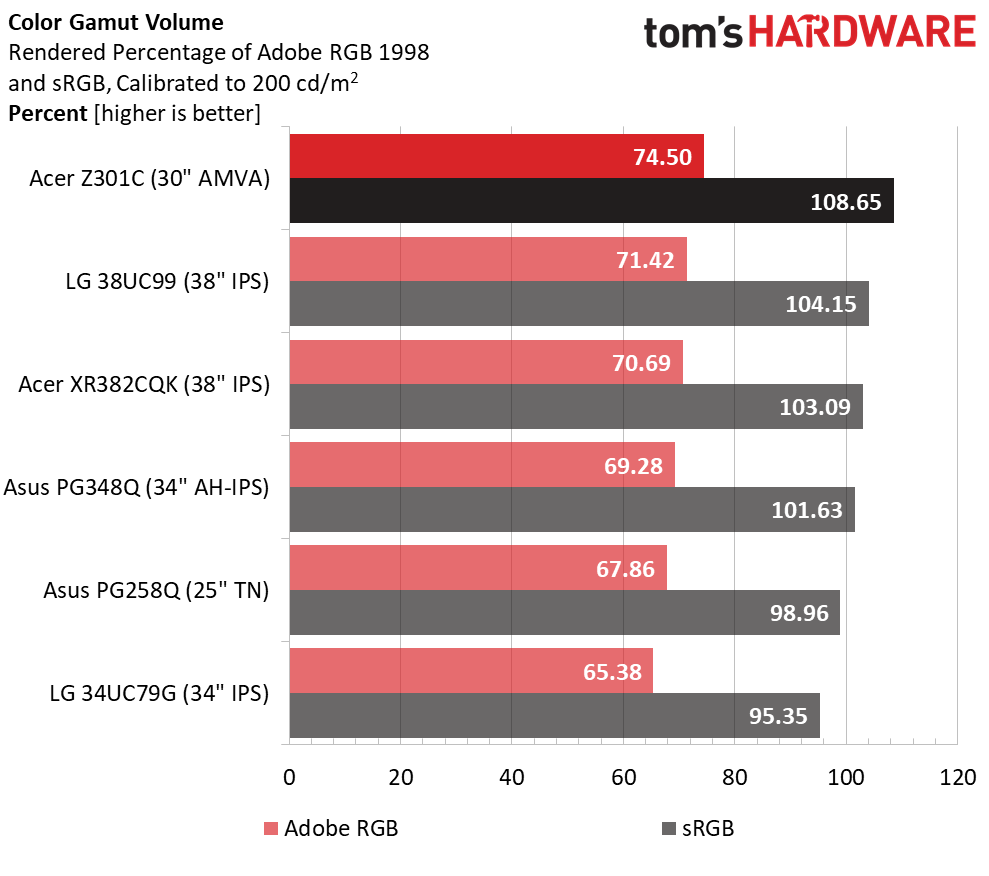
We’ve taken the color error from 4.78dE to a low 1.68dE. To see similar gains from your Z301CT, use our settings detailed on page three. The sRGB preset won’t do much for accuracy with its average color error of 4.83dE and fixed 300cd/m2 output level. User is definitely the right choice.
Thanks to over-saturated primaries, the Z301CT covers 108.65% of the sRGB gamut volume. For gaming, this provides a little extra punch to the image. If you need greater accuracy for proofing, a custom profile will reign in that extra color nicely. You can always reduce saturation to the correct level, but if it’s too low from the start you can’t add it back in.
MORE: Best Gaming Monitors
MORE: Best Professional Monitors
MORE: How We Test Monitors
MORE: How To Choose A Monitor
Current page: Grayscale, Gamma & Color
Prev Page Brightness & Contrast Next Page Viewing Angles, Uniformity, Response, Lag, & Gaming Tests
Christian Eberle is a Contributing Editor for Tom's Hardware US. He's a veteran reviewer of A/V equipment, specializing in monitors. Christian began his obsession with tech when he built his first PC in 1991, a 286 running DOS 3.0 at a blazing 12MHz. In 2006, he undertook training from the Imaging Science Foundation in video calibration and testing and thus started a passion for precise imaging that persists to this day. He is also a professional musician with a degree from the New England Conservatory as a classical bassoonist which he used to good effect as a performer with the West Point Army Band from 1987 to 2013. He enjoys watching movies and listening to high-end audio in his custom-built home theater and can be seen riding trails near his home on a race-ready ICE VTX recumbent trike. Christian enjoys the endless summer in Florida where he lives with his wife and Chihuahua and plays with orchestras around the state.